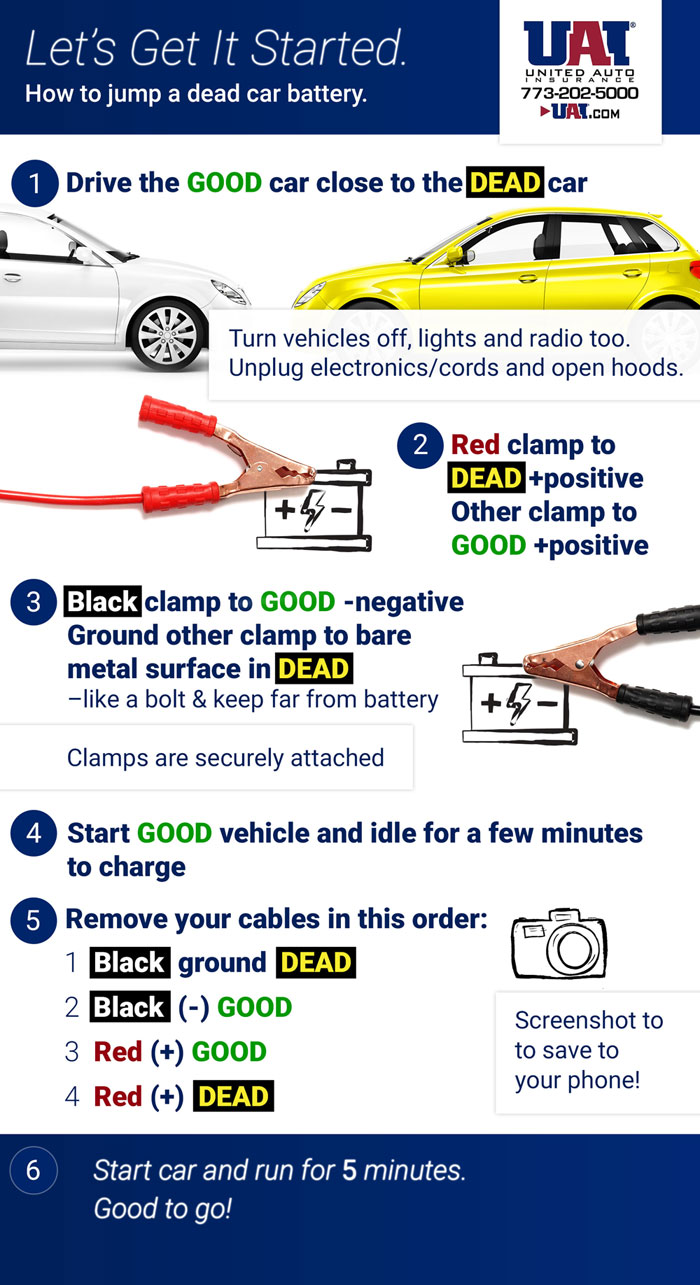Are you tired of getting frustrated and delayed by a dead car battery? We’ve all been there, standing outside our vehicle, desperately trying to start it, only to hear that dreaded clicking sound. But fear not! In this article, we will explore the simple steps you can take to prevent your car battery from dying, ensuring that your vehicle starts smoothly every time you turn the ignition.
Imagine this: you’re running late for an important meeting or a long-awaited road trip. You rush to your car, insert the key into the ignition, and turn it, only to be met with silence. The battery is dead. It’s a scenario we all want to avoid, and luckily, there are measures you can take to prevent this inconvenience. In this guide, we will delve into the essential tips and tricks that will keep your car battery charged and ready for action, allowing you to avoid those dreaded moments of frustration. So, let’s dive in and explore how you can ensure that your car starts reliably and never let a dead battery stop you in your tracks again.
To prevent a car battery from dying, it is recommended to start the car and let it run for at least 10-15 minutes every few days. This helps to recharge the battery and keep it in good condition. However, if the car is not going to be used for an extended period, it is advisable to use a battery maintainer or disconnect the battery to prevent it from draining completely.

How to Start a Car and Prevent Battery Drain
Starting a car and preventing battery drain is essential for ensuring your vehicle is always ready to go. A dead battery can be frustrating and time-consuming to deal with, but with these step-by-step instructions, you can learn how to start your car and prevent battery drain effectively.
Step 1: Check the Battery
The first step in starting your car and preventing battery drain is to check the condition of your battery. Open the hood and visually inspect the battery terminals for any signs of corrosion or loose connections. If there are any issues, clean the terminals with a wire brush and tighten them securely.
Additionally, use a multimeter to check the battery voltage. A fully charged battery should read around 12.6 volts. If the voltage is significantly lower, it may indicate a weak battery that needs to be charged or replaced.
Step 2: Turn Off All Accessories
Before starting your car, make sure all accessories such as lights, radio, air conditioning, and windshield wipers are turned off. These accessories draw power from the battery and can contribute to drain if left on.
Double-check that all doors, windows, and the trunk are closed properly. Sometimes, a light or an electrical component may remain on, draining the battery over time. Ensure everything is shut off to minimize the chances of battery drain.
Step 3: Start the Car
Insert the key into the ignition and turn it to the “on” position. Allow the car’s electrical system to power up for a few seconds before attempting to start the engine. Once the system is ready, turn the key further to start the engine. If the engine doesn’t start immediately, release the key and try again. Avoid holding the key in the start position for an extended period, as it can strain the battery.
If the car still doesn’t start after a few attempts, it may indicate a deeper issue with the battery or other components. In such cases, it’s best to seek professional help or call for roadside assistance.
Step 4: Prevent Battery Drain
To prevent battery drain when the car is not in use, there are a few precautions you can take:
- Regularly drive your car: If you have a vehicle that is not driven frequently, consider taking it for a short drive at least once a week. This helps keep the battery charged and prevents it from draining.
- Disconnect the battery: If you plan on leaving your car unused for an extended period, disconnect the negative terminal of the battery. This prevents any parasitic drain from electrical components and ensures the battery remains charged.
- Use a battery maintainer: Invest in a battery maintainer or trickle charger. These devices can be connected to the battery and provide a slow, steady charge to keep it topped up. They are especially useful for long periods of inactivity.
Step 5: Seek Professional Help
If you consistently experience battery drain issues or have difficulty starting your car even after following the above steps, it’s advisable to seek professional help. A qualified mechanic can diagnose the problem and recommend the necessary repairs or replacements to ensure your car starts reliably.
Frequently Asked Questions
Here are some commonly asked questions about how long it takes to start a car to prevent the battery from dying:
1. How long does it take to start a car?
Starting a car typically takes just a few seconds. When you turn the key in the ignition or press the start button, the car’s engine should start running almost immediately. However, in some cases, it may take slightly longer for the engine to start, especially if the car has been sitting idle for a while or if there is an issue with the battery or ignition system.
If you find that it takes significantly longer than usual to start your car, it may be a sign of a problem that needs attention, such as a weak battery, a faulty starter motor, or a fuel delivery issue. It is recommended to have your vehicle inspected by a qualified mechanic if you experience persistent difficulties starting your car.
2. How can I prevent my car’s battery from dying?
To prevent your car’s battery from dying, there are a few steps you can take:
Firstly, make sure all lights, including headlights and interior lights, are turned off when you park your car. Leaving lights on can drain the battery over time.
Secondly, avoid using electrical accessories such as the radio or air conditioning when the engine is not running. These accessories draw power from the battery and can contribute to draining it.
Lastly, if you don’t plan on using your car for an extended period, consider disconnecting the battery or using a trickle charger to maintain its charge. This can help prevent the battery from dying while the vehicle is not in use.
3. What factors can affect the time it takes to start a car?
Several factors can affect the time it takes to start a car. These include:
– Battery condition: A weak or old battery may take longer to provide the necessary power to start the engine.
– Temperature: Extreme cold or hot weather can impact the starting time as the battery’s performance may be affected.
– Ignition system: Faulty spark plugs, ignition coils, or other ignition components can cause delays in starting the engine.
– Fuel delivery: Issues with the fuel pump or fuel injectors can affect the time it takes for the engine to start.
– Engine health: If the engine is not properly maintained or if there are underlying mechanical issues, it may take longer to start.
4. What should I do if my car doesn’t start right away?
If your car doesn’t start right away, there are a few steps you can take:
– Check the battery connections: Ensure that the battery terminals are clean and securely connected. Loose or corroded connections can prevent the battery from providing enough power.
– Try a jump-start: If you suspect a weak battery, you can try jump-starting the car using jumper cables and another vehicle with a working battery. Follow the proper jump-start procedure as outlined in your vehicle’s manual.
– Call for assistance: If jump-starting doesn’t work or if you’re unsure about the cause of the issue, it is best to contact a professional roadside assistance service or a qualified mechanic for further assistance.
5. Can leaving electronics plugged in drain the car battery?
Yes, leaving electronics plugged in can drain the car battery. Even when the engine is not running, certain electrical accessories like phone chargers or GPS devices can draw power from the battery if they are left connected. Over time, this can lead to battery drain and potentially prevent the car from starting.
To avoid this, it is recommended to unplug or turn off any electronic devices that are not in use when the engine is off. This will help preserve the battery’s charge and prevent unnecessary drain.

In a fast-paced world where time is of the essence, it’s easy to overlook the importance of regularly starting a car to prevent battery die. However, this simple routine can save drivers from the hassle of dealing with a dead battery and the potential inconvenience it may cause. By incorporating this practice into our daily routines, we can ensure that our vehicles remain in optimal condition, ready to serve us whenever we need them. So, let’s remember to give our cars the attention they deserve, starting them regularly and keeping their batteries charged, allowing us to enjoy worry-free journeys on the open road.
- How to Test Ac Compressor Clutch: Mastering the Ultimate AC Diagnosis - May 17, 2024
- How Does Water Infiltrate a Jet Ski Engine? - May 17, 2024
- How to Master Code Reading with Autozone’s Reader: Unlock Your Car’s Secrets - May 17, 2024
